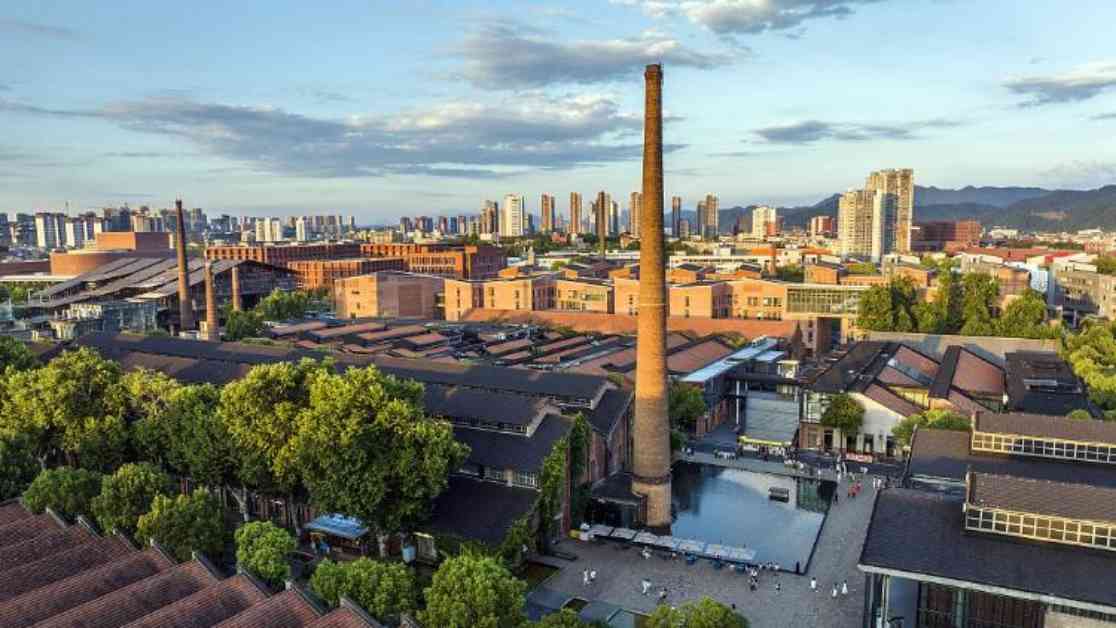China’s porcelain industry is undergoing a remarkable transformation, with traditional cities like Jingdezhen in Jiangxi Province experiencing a resurgence of energy and growth. Entrepreneurs like Sun Qiang, a ceramist from Shanxi Province, have been drawn to Jingdezhen by the opportunities presented by the local government’s efforts to revitalize old factories and promote cultural and creative industries. Sun’s story is just one example of how young artists and designers are flocking to the city, eager to be a part of its evolving landscape.
Revitalizing Jingdezhen
Sun Qiang’s journey from a small studio in Taiyuan to a thriving business in Jingdezhen is a testament to the city’s reinvention as a hub for creativity and innovation. With the local government’s support, old factories have been renovated and repurposed into cultural and creative districts like Taoxichuan Ceramic Art Avenue, attracting artists and entrepreneurs from all over China. These efforts have not only revitalized the city’s economy but also brought new life and energy to its streets.
The transformation of Jingdezhen is evident in the bustling art district, where young people like Sun are finding opportunities to pursue their dreams and build their careers. Taoxichuan, once a ceramic factory from the 1950s, now stands as a symbol of Jingdezhen’s commitment to preserving its heritage while embracing modernity. Gang Hao, the general manager of Taoxichuan, emphasizes the district’s role in driving local economic development and fostering a vibrant community of artists and creators.
A Beacon for Young Artists
As Jingdezhen continues to evolve, it has become a beacon for young artists seeking to make their mark in the world of ceramics and design. The city’s rich history and cultural heritage provide a fertile ground for creativity, inspiring a new generation of talent to push boundaries and explore new possibilities. With initiatives like Taoxichuan attracting artists from outside Jingdezhen, the city has become a melting pot of ideas and influences, shaping the future of China’s porcelain industry.
The influx of young artists and entrepreneurs has injected new vitality into Jingdezhen, propelling it into a new era of growth and innovation. With over 26,000 registered businesses in Taoxichuan alone, the city’s creative industries are thriving, creating employment opportunities for thousands of people and driving industrial development. Gang Hao highlights the importance of these young pioneers in shaping Jingdezhen’s future and propelling it towards becoming a model of sustainable growth and development.
China’s Vision for the Future
Jingdezhen’s transformation mirrors China’s broader vision for economic development, as outlined in the country’s leadership at the Third Plenary Session of the 20th Central Committee of the Communist Party of China. The emphasis on developing new quality productive forces aligns with Jingdezhen’s efforts to cultivate a vibrant creative economy that goes beyond traditional modes of production. By nurturing young talent and fostering a culture of innovation, the city is paving the way for a new era of prosperity and progress.
In conclusion, Jingdezhen’s reinvention as China’s porcelain capital is a testament to the power of creativity and entrepreneurship in driving economic growth and development. Through initiatives like Taoxichuan and the influx of young artists and designers, the city is poised to become a global hub for ceramics and design, setting a new standard for industrial revitalization and cultural innovation. As Jingdezhen continues to attract talent from across China and beyond, its future as a thriving creative hub looks brighter than ever.

















